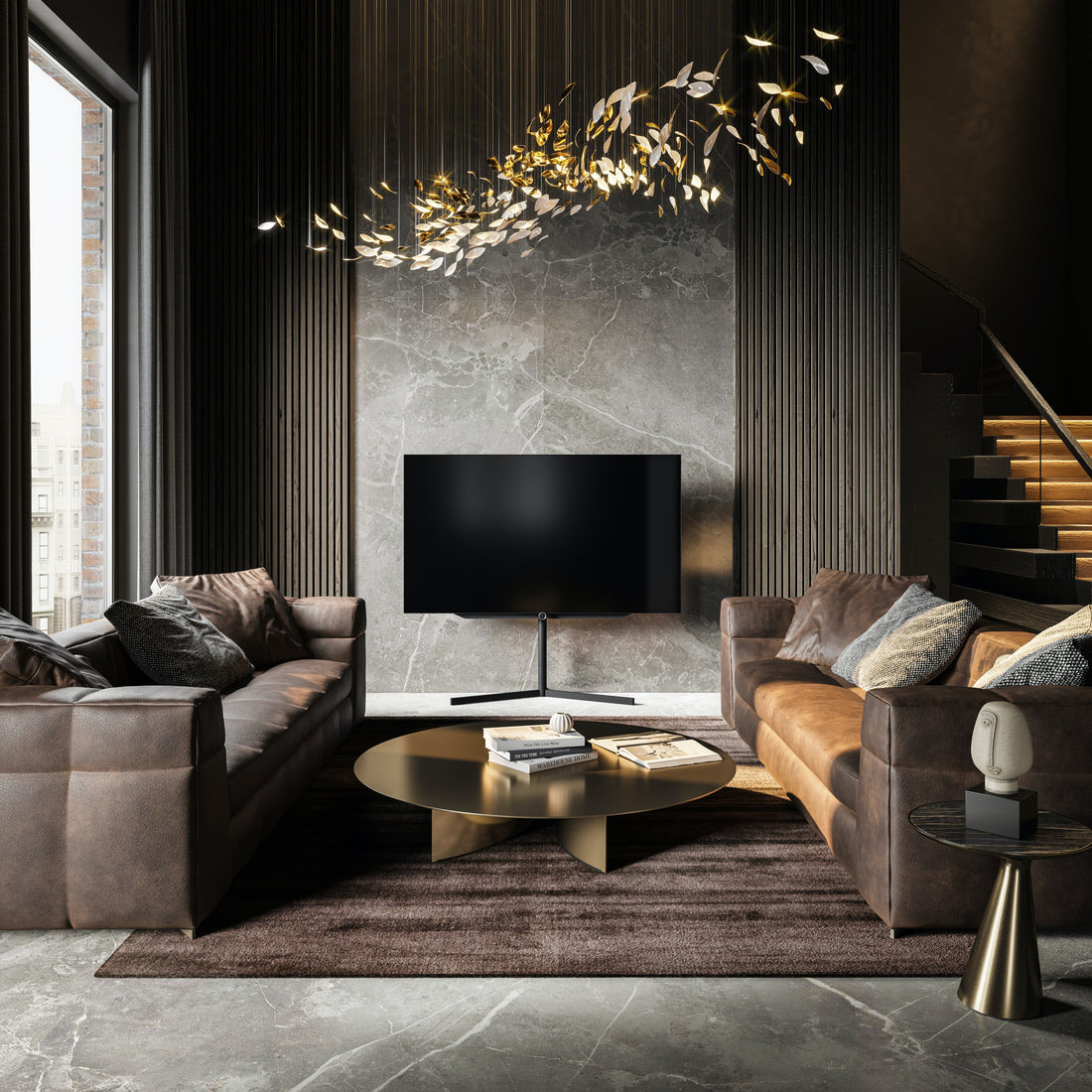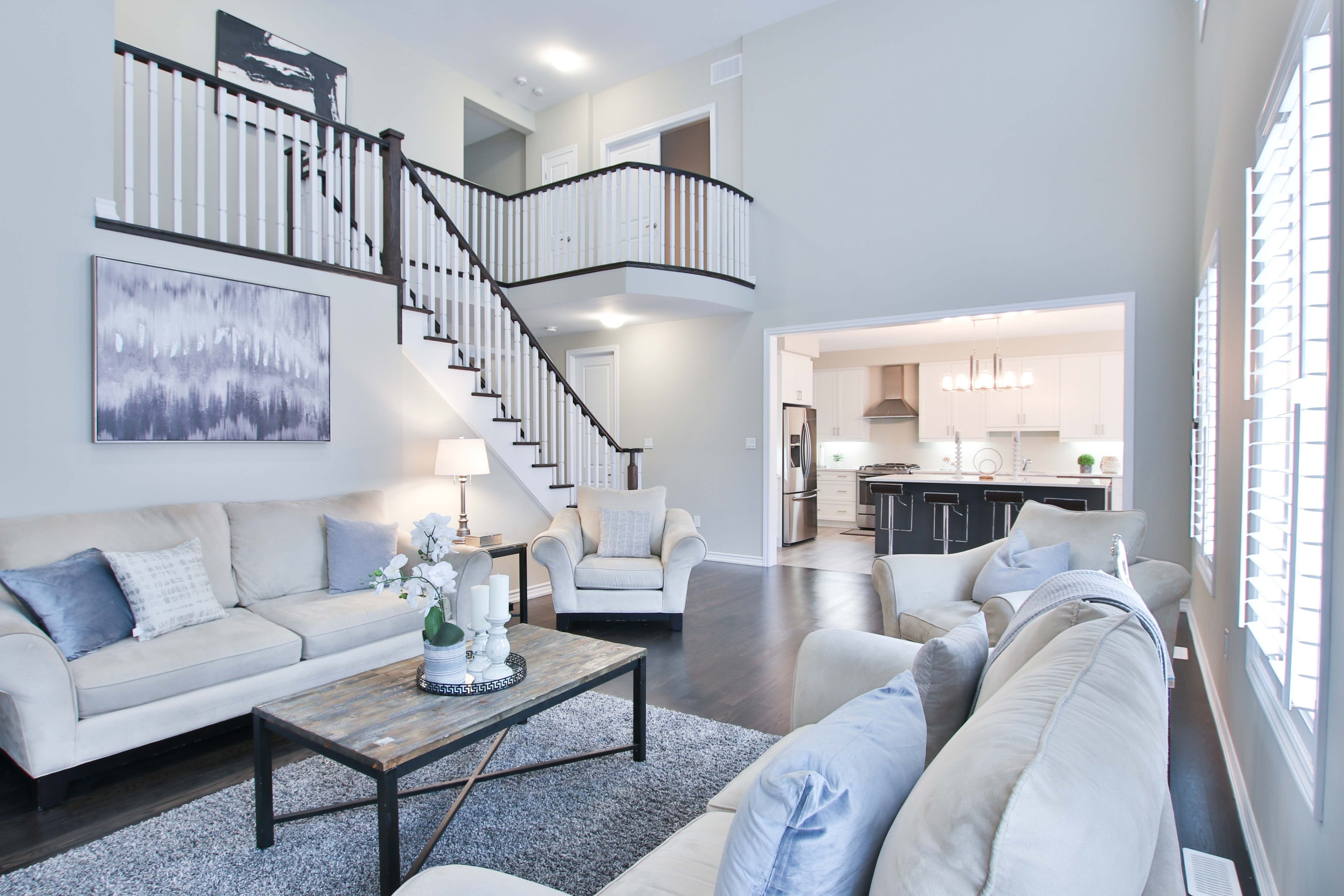
What's Your Interior Design Style?
Share
Many people have a difficult time expressing their own interior design tastes, which is OKAY! There's so many decorating styles and it can be hard to decide which one works best for you and your home. Heck, some people like to mix and match components of multiple styles to make their own look.
However, to begin the process of designing your space, it's important to have an understanding of each style and how they differ from each other. Let's do a run down of styles so you can narrow down what you like.
MODERN INTERIOR DESIGN
Modern design is a term that encompasses both contemporary and industrial styles. It's all about simple, clean lines, smooth color palettes and sturdy materials.
Furniture tends to be sleek, minimalist and uncluttered. Modern style furnishings and décor celebrate natural materials, neutral or earthy colors, and the elimination of unnecessary detailing. Most modern styles use a monochromatic color palette (neutral or natural colors). You can find

Photo Credit: Houzlook.com
CONTEMPORARY INTERIOR DESIGN
If you're looking for a design style that's current and trendy, look no further than contemporary design. This popular style is constantly evolving to stay up-to-date with the times. It borrows elements from different time periods to create an environment that will last for years to come. Contemporary furniture is characterized by exposed legs and clean lines, which gives it a light and airy feel. And simple yet elegant color schemes provide the perfect backdrop for eye-catching features that reinvent existing structures. When it comes to wall colors, white, brown, gray, and navy are always safe bets. And don't forget to incorporate pops of color throughout the space via artwork, furniture, or décor.

Photo Credit: Alina Larionova
TRANSITIONAL INTERIOR DESIGN
What is transitional design? Transitional design is a mix of traditional and contemporary styles. Transitional design uses texture and tone instead of color to create contrast. A classic wood dining table paired with curved dining chairs is a beautiful example of transitional design. You can find some great examples of transitional design here.

Photo Credit: Reena Sotropa
GLAM INTERIOR DESIGN
This style is for you if you absolutely LOVE all things pretty, fancy, and extravagant! Glam interior design leans towards a maximalist approach and has an airy, upscale feel. Luxurious fabrics, glistening metals, and sparkly accessories are perfect for creating a glammed out look.

Photo Credit: Decorilla
TRADITIONAL INTERIOR DESIGN
Traditional design is all about elegance and luxurious details. If you're looking for a timeless look, this is it. With roots in Europe, traditional design is distinguished by dark wood pieces, a rich color palette, and plenty of texture and curves. You'll find lavish fabrics like velvet, silk, and brocade in a variety of patterns and textures. Plus, these designs have depth, layering, and an eye-catching dimensionality!

Photo Credit: Aimée Mazzenga
COASTAL INTERIOR DESIGN
Looking to add some coastal flair to your home? Here are some design tips to help you get the look. Coast-inspired interiors are all about light and bright colors, often in neutrals, to reflect the sun. Think light blues and greens reminiscent of the ocean, along with a mix of cream and neutral hues for a relaxed but chic vibe. Our favorite coastal inspired projects can be found here

MID-CENTURY INTERIOR DESIGN
If you're looking to add a touch of mid-century modern style to your home, here are some tips. Focus on clean lines with a mix of organic and geometric shapes. Use a combination of natural and manmade materials, graphic shapes, and vibrant colors. Indoor and outdoor motifs can be combined for a modern touch. And don't forget to use neutral tones with occasional splashes of color, like a bright accent chair.

RUSTIC & FARMHOUSE INTERIOR DESIGN
If you're wondering what the difference is between rustic and farmhouse style, wonder no more. Rustic style is all about ruggedness and letting natural beauty shine. The focus is on creating a relaxing atmosphere by highlighting the use of wood, stone, leaves, and other organic elements. Rather than worry about perfect lines, rustic allows the character of each piece to stand out.

Farmhouse design, on the other hand, is defined by practicality and comfort. Wood elements and white tones are used to curate a farmhouse styled look.

ECLECTIC INTERIOR DESIGN
Eclectic designs are all about mixing elements that cover a wide range of looks from bohemian to more elegant and polished. An eclectic living room design could feature sofas and chairs that differ in style but are cohesive because of the other elements in the design like the patterns, colors, and lighting. The eclectic style also combines décor from several eras. Vintage furniture may be matched with minimalist architectural art.

BOHEMIAN INTERIOR DESIGN
So you want to get the boho look, huh? Here's what you need to know. Bohemian style is all about mixing different cultures and expressions into one eclectic style. Think organic elements, nature-inspired materials, and lots of color. When it comes to layering, more is more. Justina Blakeney is the queen of boho-chic, and her style includes woven wall hangings, vintage throws and pillows, and plenty of greenery. So go ahead and add some layers, mix some patterns, and have fun with it!

ART DECO INTERIOR DESIGN
Art Deco is all about bold colors, striking geometry, and luxurious detail work. If you want to create a lavish look, go for rich jewel tones like cobalt blue, emerald, and deep purple. Or if you prefer a darker, more elegant atmosphere, use dark gray or black paint colors.
Remember to balance deeper shades with neutrals like cream and beige, and accessorize with metallic accents for a touch of brightness. And don't forget that Art Deco celebrates grandeur and drama! Make a statement with prominently placed artwork in high-contrast hues, or display sculptural accents that embody the style's sleek look.

Photo Credit: Menna Yasser
What styles do you like the best? Let us know and we'll try to match you up with something you'll love!

